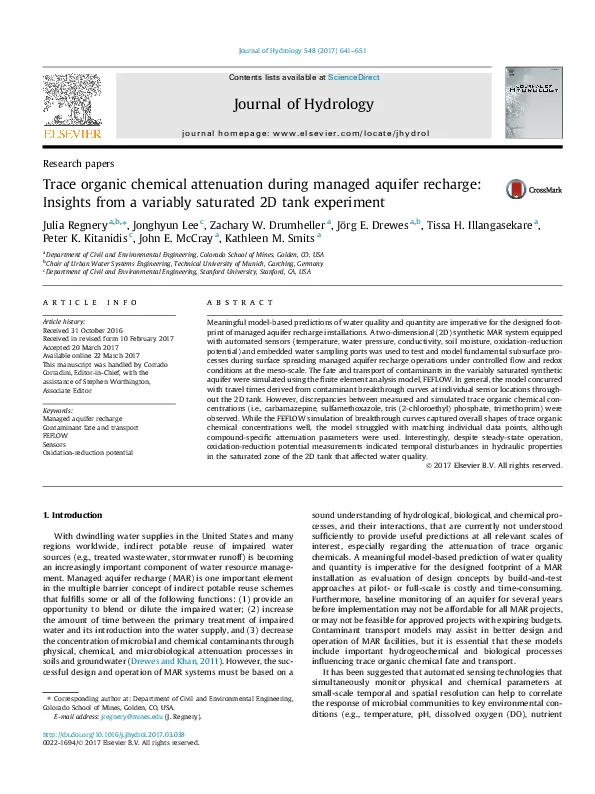Meaningful model-based predictions of water quality and quantity are imperative for the designed footprint of managed aquifer recharge installations. A two-dimensional (2D) synthetic MAR system equipped with automated sensors (temperature, water pressure, conductivity, soil moisture, oxidation-reduction potential) and embedded water sampling ports was used to test and model fundamental subsurface processes during surface spreading managed aquifer recharge operations under controlled flow and redox conditions at the meso-scale. The fate and transport of contaminants in the variably saturated synthetic aquifer were simulated using the finite element analysis model, FEFLOW. In general, the model concurred with travel times derived from contaminant breakthrough curves at individual sensor locations throughout the 2D tank. However, discrepancies between measured and simulated trace organic chemical concentrations (i.e., carbamazepine, sulfamethoxazole, tris (2-chloroethyl) phosphate, trimethoprim) were observed. While the FEFLOW simulation of breakthrough curves captured overall shapes of trace organic chemical concentrations well, the model struggled with matching individual data points, although compound-specific attenuation parameters were used. Interestingly, despite steady-state operation, oxidation-reduction potential measurements indicated temporal disturbances in hydraulic properties in the saturated zone of the 2D tank that affected water quality.
